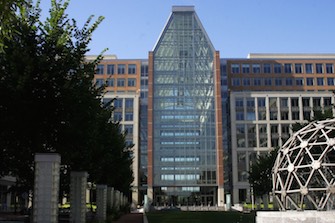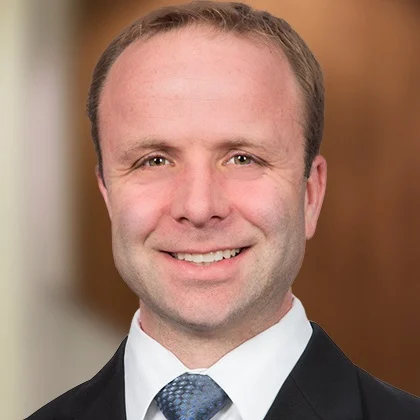 The USPTO recently issued updates to its patent subject matter eligibility guidance. See Interim Guidance on Subject Matter Eligibility – May 2016 updates. The updates are primarily aimed at assisting examiners in evaluating claims for subject matter eligibility under 35 U.S.C. §101, taking into account the U.S. Supreme Court’s decisions in Alice Corp., Myriad, and Mayo and the Federal Circuit’s recent decisions in Enfish v. Microsoft Corp. and TLI Comm v. A.V. Automotive. The guidance instructs examiners on formulating §101 rejections and evaluating an applicant’s response to such rejections using the two-part Mayo/Alice test. The examples in the guidance are intended to illustrate for examiners how the two-part Mayo/Alice test can be applied in different factual situations in the life sciences. The release of these updates highlights efforts by the USPTO to respond to feedback from public stakeholders and the examining corps and to stay on pace with what seems to be a continually evolving legal framework relating to subject matter eligibility.
The USPTO recently issued updates to its patent subject matter eligibility guidance. See Interim Guidance on Subject Matter Eligibility – May 2016 updates. The updates are primarily aimed at assisting examiners in evaluating claims for subject matter eligibility under 35 U.S.C. §101, taking into account the U.S. Supreme Court’s decisions in Alice Corp., Myriad, and Mayo and the Federal Circuit’s recent decisions in Enfish v. Microsoft Corp. and TLI Comm v. A.V. Automotive. The guidance instructs examiners on formulating §101 rejections and evaluating an applicant’s response to such rejections using the two-part Mayo/Alice test. The examples in the guidance are intended to illustrate for examiners how the two-part Mayo/Alice test can be applied in different factual situations in the life sciences. The release of these updates highlights efforts by the USPTO to respond to feedback from public stakeholders and the examining corps and to stay on pace with what seems to be a continually evolving legal framework relating to subject matter eligibility.
On its face, the new guidance seems to urge examiners to develop well-reasoned, substantive rejections rather than conclusory rejections which provide little basis for applicants to advance applications toward allowance, particularly in the complex areas of vaccines, diagnostics, methods of treatment, and screening for genetic alterations, where the new examples are focused. Furthermore, compared with prior guidance, the new examples include more claims that are considered patent eligible subject matter. Some observers believe this may be an effort by the patent office to dispel hesitation that examiners have apparently had in drawing conclusions of patent eligibility when examining claims.
While the guidance can be helpful to both examiners and applicants/practitioners, it is important to keep in mind that the guidance does not constitute substantive rulemaking and does not have the force and effect of law (the USPTO itself, applying good guidance drafting practice, makes this clear). Instead, applications must be evaluated based on the substantive law that is embodied in the two-part Mayo/Alice test.
With this in mind, practitioners should resist the urge to engage in extensive back-and-forth with examiners over a perceived lack of adherence to the guidance because such a failure is not petitionable or appealable, and unlikely to advance applications in a productive way. This isn’t to say that applicants shouldn’t make reference to the examples in responding to §101 rejections; in fact, this can often be helpful in illustrating how the framework, when applied to claims in applications, should result in patent eligible subject matter. However, applicants are likely better served by developing primary arguments in responding to §101 that are based on a direct application of the two-part Mayo/Alice test, and supplementing those arguments where circumstances permit by drawing analogies to examples from the guidance. Such an approach keeps examination focused on substantive law while providing a frame of reference that can be helpful to examiners, who often struggle with reaching well-reasoned conclusions on patent eligibility that are consistent with other similar cases being examined at the patent office.
The new guidance is the latest in a series of guidance that stems back to 2009 and Bilski v. Kappos. In parallel with the more recent guidance, the patent office has initiated a new pilot program as part of its Enhanced Patent Quality Initiative, in which it performs reviews of applications on target issues for internal quality purposes with a goal of strengthening work products, processes, and services. It claims that this initiative will result in higher-quality patents as well as increased certainty and clarity of rights, which fuel innovation and reduce litigation. It is notable that among the six topics that the patent office selected for inclusion in this pilot program, three are specifically focused on subject matter eligibility issues. In the first study, the patent office is evaluating whether examiners are properly making rejections under §101 and clearly communicating their reasoning. In the second study, it is reviewing consistency of §101 rejections of applications containing related technologies but in different art units or technology centers, aimed at determining whether similar claims are being treated dissimilarly under §101. In the third study, the USPTO is examining whether all appropriate rejections (including those under §112, §102 and/or §103) are being made when a subject matter eligibility issue is also identified.
It is encouraging that the USPTO is taking such steps to address the uncertainty and apparent inconsistencies that have seemingly plagued patent prosecution in the §101 arena since the guidance prompted by Bilski v. Kappos was issued. These efforts can be felt at the USPTO’s front lines, as most examiners seem open to working with applicants to find paths forward for addressing and overcoming §101 issues in a manner that keeps with examination policy (current guidelines) and the substantive law that underlies it. In this regard, applicants can often find success by engaging with examiners early in prosecution, either in person, by telephone, or in video conference interviews (the USPTO’s First Action Interview Program may be a helpful tool in this regard). Throughout this process, examiners often consult with internal §101 specialists to assist with evaluating patent eligibility issues and proposed claim amendments for addressing such issues.
With multiple §101 cases currently making their way through courts, including Ariosa v. Sequenom, which the Supreme Court has been petitioned to review, and new technologies emerging that push the envelope on patent eligible subject matter, the §101 landscape will only continue to evolve.
In the meantime, applicants and practitioners may successfully avoid §101 pitfalls by strategically pursuing claims which are clearly patent eligible. Where §101 issues are likely to arise, applicants and practitioners can take steps to facilitate prosecution, such as presenting arguments which adhere to the two-part Mayo/Alice test and analogizing to relevant examples from the guidance.

![[IPWatchdog Logo]](https://ipwatchdog.com/wp-content/themes/IPWatchdog%20-%202023/assets/images/temp/logo-small@2x.png)


![[Advertisement]](https://ipwatchdog.com/wp-content/uploads/2024/04/Patent-Litigation-Masters-2024-sidebar-early-bird-ends-Apr-21-last-chance-700x500-1.jpg)

![[Advertisement]](https://ipwatchdog.com/wp-content/uploads/2021/12/WEBINAR-336-x-280-px.png)
![[Advertisement]](https://ipwatchdog.com/wp-content/uploads/2021/12/2021-Patent-Practice-on-Demand-recorded-Feb-2021-336-x-280.jpg)
![[Advertisement]](https://ipwatchdog.com/wp-content/uploads/2021/12/Ad-4-The-Invent-Patent-System™.png)







Join the Discussion
6 comments so far.
Jessica Colantonio
June 6, 2016 04:58 pm@ Mark Nowotarski. There are several art units into which diagnostics can fall in TC 1600 (e.g.,1634). It looks like someone has at least started looking at your question for certain diagnostic applications pre- and post-Mayo – see Bernard Chao and Amy Mapes, An Early Look at Mayo’s Impact on Personalized Medicine, 2016 Patently-O Patent Law Journal 10.
Mark Nowotarski
June 2, 2016 01:57 pmJessica,
Thanks. What art units and/or classes do diagnostic applications fall into? I thought I would take a look at allowance rates pre and post Alice just to see what kind of impact it’s had.
Daniel Young
June 2, 2016 01:06 pm@Curious. Sounds like a good one to interview.
Jessica Colantonio
June 2, 2016 11:10 am@Mark Nowotarski – Thank you for your comment. On the biotechnology side, 101 eligibility is particularly difficult for diagnostic applications. Of note, the new USPTO guidance attempts to clarify the two-part analysis for diagnostic claims in Example 29, relating to diagnosis (and treatment) of a disease based on the presence of a marker for the disease.
Curious
June 1, 2016 12:22 pmOn its face, the new guidance seems to urge examiners to develop well-reasoned, substantive rejections rather than conclusory rejections which provide little basis for applicants to advance applications toward allowance.
LOL … I just got a (new) Alice rejection in an (old) application in an office action that issued within the last couple of days. The ENTIRE supporting analysis (including case cites and boilerplate) was a paragraph — about 1/3 page long.
Some things never change ….
Mark Nowotarski
June 1, 2016 10:34 amDaniel, Jessica,
Great article. On the biotechnology side, what are the most challenging fields to demonstrate 101 eligibility? On the tech side, business methods is clearly the most difficult field. I was wondering if there was anything analogous on the bio tech side.